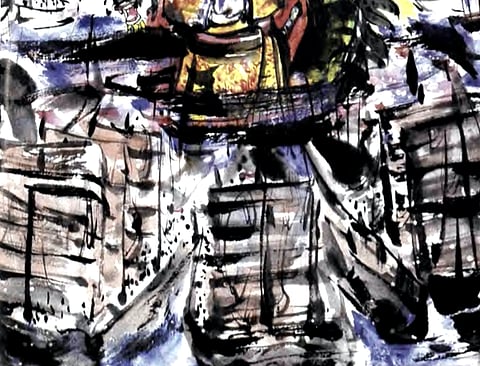Across the kala pani
A minor part of the freedom struggle in India was an attempt to depict a glorious past, which had been (temporarily) subverted by British colonialism. India had been great in the past, and would be again once it was free. This applied to maritime matters as well as the land: India had a proud maritime past, and her ships dominated the waters of the Indian Ocean. Historically there had been a Greater India, one where India had dominated culturally (and according to some, even politically) many of the areas around the Indian Ocean. In the case of East Africa, it was claimed that the gold mining in Zimbabwe was controlled by Indians. The famous carved doors found on the Swahili coast demonstrate, so we are told, Indian influence. And indeed, one scholar has triumphantly 'proved' that India dominated the Indian Ocean area, for why else would the ocean be called 'Indian'? Similarly in Southeast Asia, Indian super-patriots claimed that much of this region had been a mere cultural colony of India. Closer examination would weaken these claims; yet in fact there does seem to be some justification in seeing India as the fulcrum, or hub, of the Indian Ocean. Much flowed out from here; but oddly, little of significance came back.
First, a few definitions are in order, including that of the Indian Ocean. If one were to take it as meaning only the ocean, that is water, we would have little to say, for the sea per se has little role in Southasia. Rather, the term Indian Ocean means the countries around its rim, or littoral, and here there is an even greater diversity than was the case for Southasia. There are topographical extremes, all the world's major religions, about 30 modern states and great variations in economic development. Further to complicate matters, it is essential to differentiate between the western ocean, the rather misnamed Arabian Sea, and the eastern, the equally incorrectly demarcated Bay of Bengal. Even this is too simple, for it leaves out the vast Great Southern Ocean, conventionally considered to be all waters south of 60 degrees South. For that matter, there is a considerable difference between the monsoon Indian Ocean, down to 10 degrees South, and the trade-wind regime south of this. Yet at times we have to consider the greater Indian Ocean. For instance, today, India is making quite ambitious claims on Antarctica. The question would arise as to what the other Southasian states think about this.

